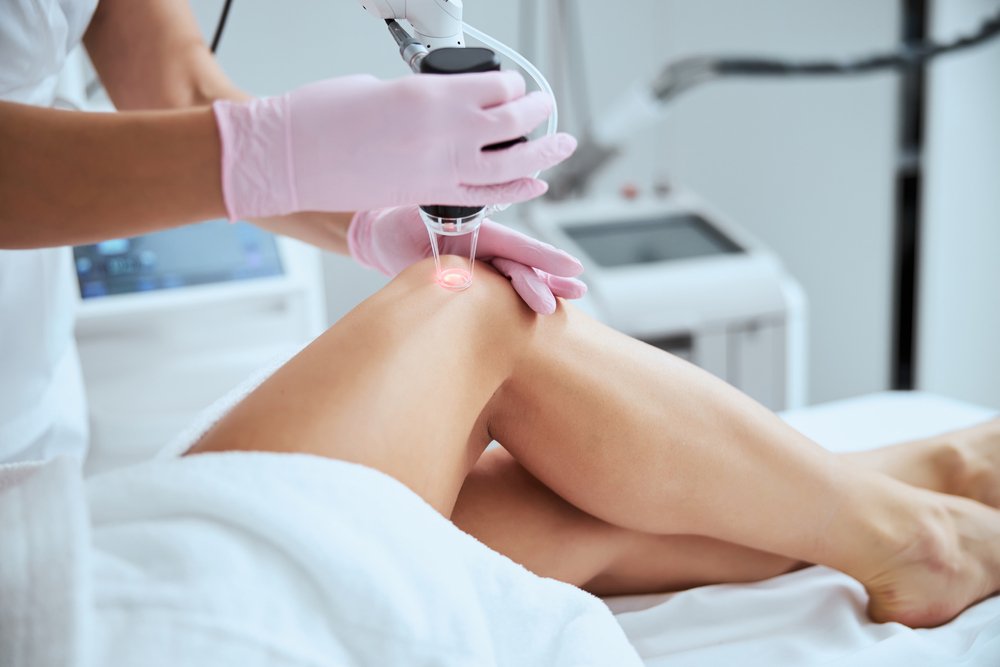 Spider veins, also known as telangiectasia or thread veins, are a common but often misunderstood vascular issue that can cause more than just an aesthetic concern. In our appearance-focused society, the visibility of these intricate red, blue, or purple web-like veins just under the surface of the skin can be a source of self-consciousness for many. But when is it time to shift from camouflage solutions to medical attention? Understanding the underlying causes and potential risks associated with spider veins is crucial for your long-term health and well-being.
Spider veins, also known as telangiectasia or thread veins, are a common but often misunderstood vascular issue that can cause more than just an aesthetic concern. In our appearance-focused society, the visibility of these intricate red, blue, or purple web-like veins just under the surface of the skin can be a source of self-consciousness for many. But when is it time to shift from camouflage solutions to medical attention? Understanding the underlying causes and potential risks associated with spider veins is crucial for your long-term health and well-being.
The Significance of Spider Veins
At their core, spider veins are dilated blood vessels close to the skin's surface. They can appear in various patterns, resembling the legs of a spider—hence their name. Many people accept them as a cosmetic nuisance and nothing more. However, while they aren't typically painful or harmful by themselves, they do serve as an indicator of underlying venous insufficiency. This condition can lead to more severe symptoms such as varicose veins, leg swelling, and in rare cases, deep vein thrombosis.
If you're noticing an increase in spider veins, that could be your body's way of alerting you to a potential problem with your circulatory system. The causes of spider veins can range from hormonal changes and pregnancy to prolonged standing or sitting, yet the complexity of their development often points to an issue beyond just skin deep.
Knowing When to Act
The mere presence of spider veins doesn't automatically call for an appointment with a vascular specialist, but it does warrant attention. Here are some signs that should prompt you to seek medical advice:
1. Discomfort Beyond Cosmetic
While spider veins are commonly painless, some individuals report symptoms such as itching, burning, or aching around the affected area. If you experience persistent discomfort, it’s essential to have a physician investigate further as it could indicate a more advanced venous issue.
2. Rapid Progression or Clustering
If you notice a sudden influx of new spider veins or a clustering in one area, this change could signal an uptick in venous pressure. An evaluation by a professional can determine if this change is isolated or part of an underlying condition that requires management.
3. Bleeding or Tender Veins
Spider veins can sometimes become more fragile, leading to bleeding. Veins that are tender to the touch could indicate inflammation, which should be assessed to prevent complications.
4. Skin Changes and Ulcers
Chronic venous insufficiency, often tied to spider veins, can lead to skin discoloration, thickening, and even the development of ulcers. These advanced signs require immediate medical attention to prevent infection and tissue damage.
Treating Spider Veins
In cases where treatment is necessary, several options are available. These range from minimally invasive procedures such as sclerotherapy, where a solution is injected into the vein to close it, to more advanced techniques like laser therapy or vein stripping. The choice of treatment depends on the patient's overall health, the severity of their condition, and the location of the affected veins.
Regardless of the method used, treating spider veins effectively targets the cosmetic concern while also addressing the underlying circulation issue. By doing so, patients can experience relief from any discomfort and reduce the risk of further complications.
Prevention and Lifestyle Management
Preventing the development or recurrence of spider veins is possible with some lifestyle changes. These methods not only promote vascular health but also support overall wellness.
1. Regular Exercise
Maintaining a healthy weight and staying active can improve blood flow and muscle tone, reducing the pressure on your veins. Simple actions like walking or cycling can be very effective.
2. Elevate Your Legs
After a long day, propping your legs up can help blood return to your heart. Ideally, your legs should be elevated above your heart for a few minutes several times a day.
3. Watch Your Wardrobe
Tight clothing, particularly around the waist, groin, and legs, can restrict blood flow. Opt for loose-fitting, comfortable clothing to promote circulation.
4. Avoid Prolonged Sitting or Standing
Changing positions regularly can help avoid the increased pressure on your lower extremities' veins, which can lead to spider veins. For those whose jobs require long periods of standing or sitting, frequent breaks and simple exercises can help reduce this risk.
By being proactive and mindful of these changes, you can decrease your likelihood of experiencing spider veins and other venous issues.
Empowering Yourself with Knowledge
Your body often communicates its distress through changes in our physical appearance. While we're quick to seek advice for symptoms that we recognize as part of illness or injury, we tend to overlook the more subtle signs that something might be amiss. Familiarize yourself with the indicators of vascular issues, and don't discount the importance of spider veins in your overall health.
Empower yourself with knowledge about what spider veins can signify and understand when it's time to consult a healthcare professional. By taking a proactive approach to understanding and managing these tiny yet impactful imperfections, you not only improve your aesthetic concerns but also take significant strides towards ensuring the health and functionality of your body's circulatory system.
In conclusion, spider veins are more than just a cosmetic issue. They are often a sign of an underlying vascular problem that, left unaddressed, can lead to more severe health complications. By knowing the signs, being aware of when to seek help, and understanding the available treatment options, you can take control of your vascular health. Remember, your veins play a critical role in your body's circulatory system, and it’s up to you to give them the care and attention they deserve.
We can help you address any concerns about Spider Veins; Make an appointment with our Vascular Surgeon ( Spider Vein Specialist ); We also offer appointments on late evenings & weekends.
